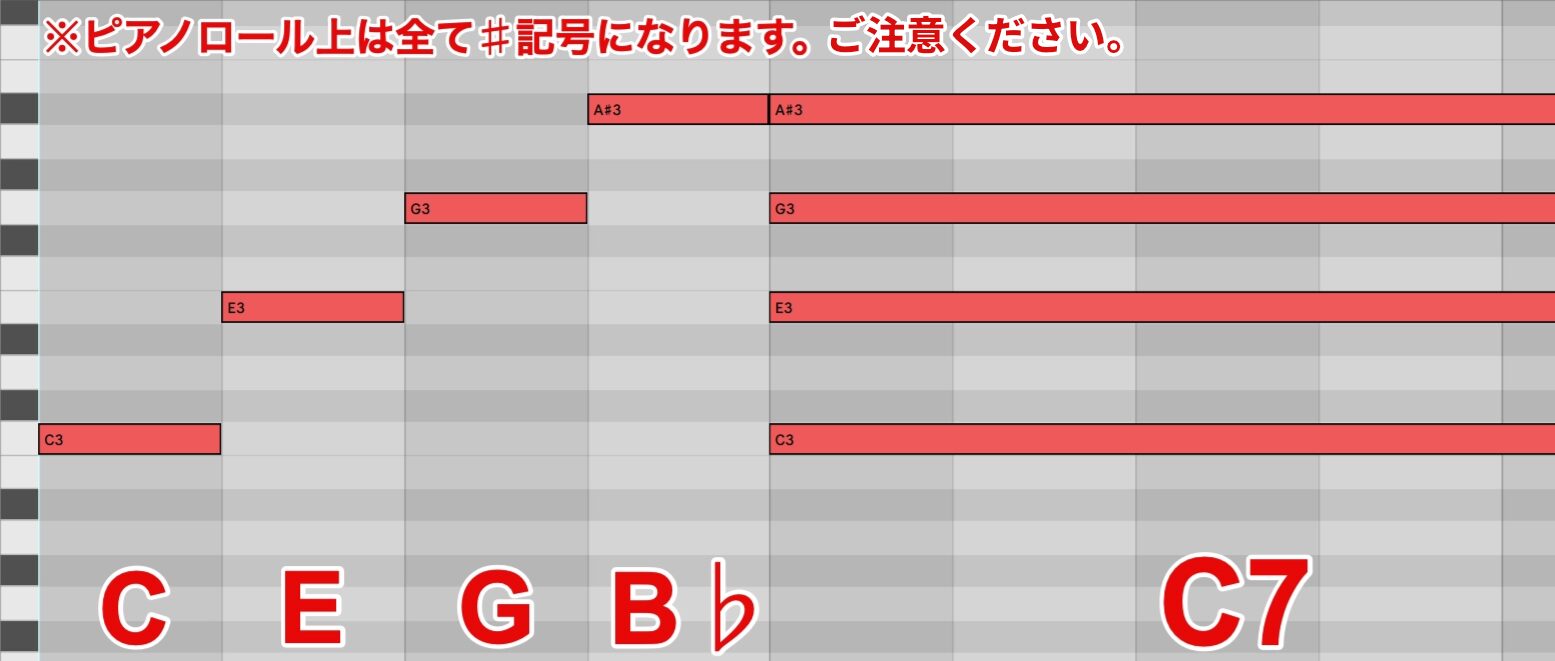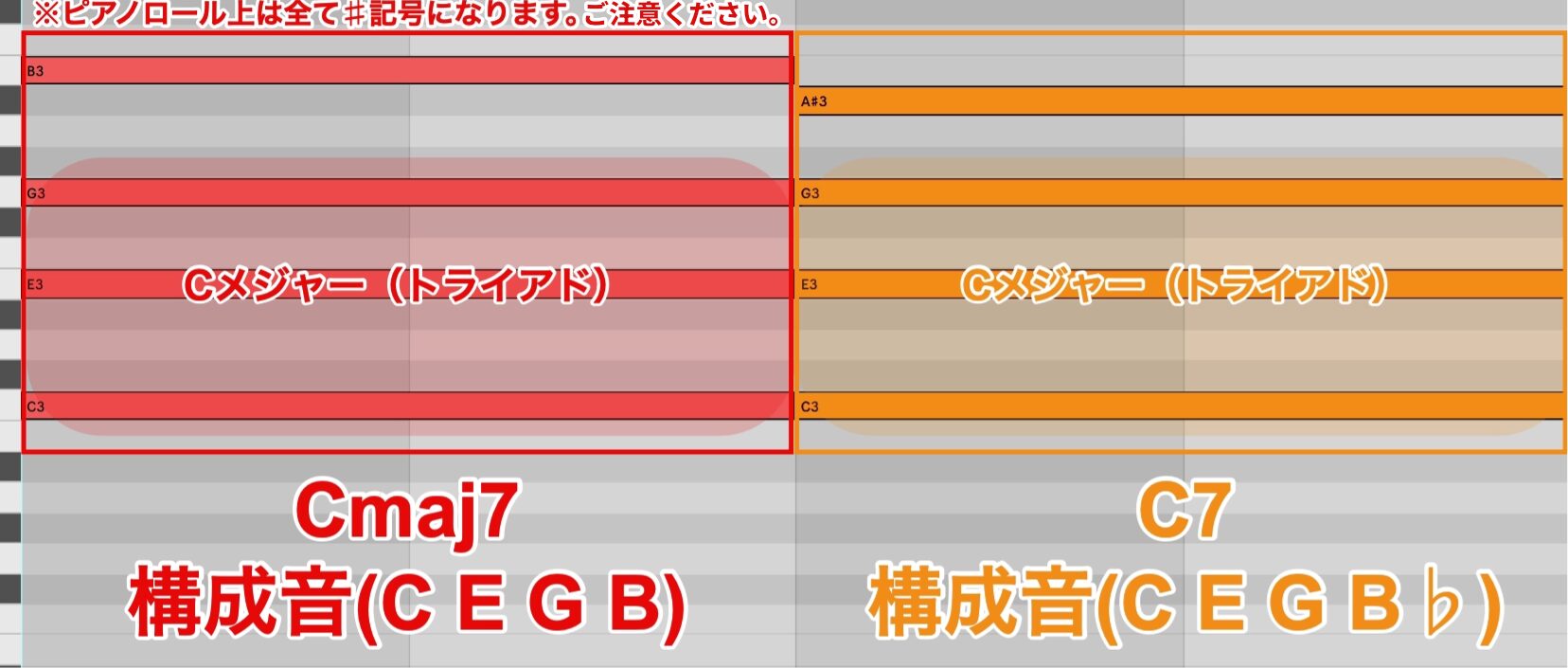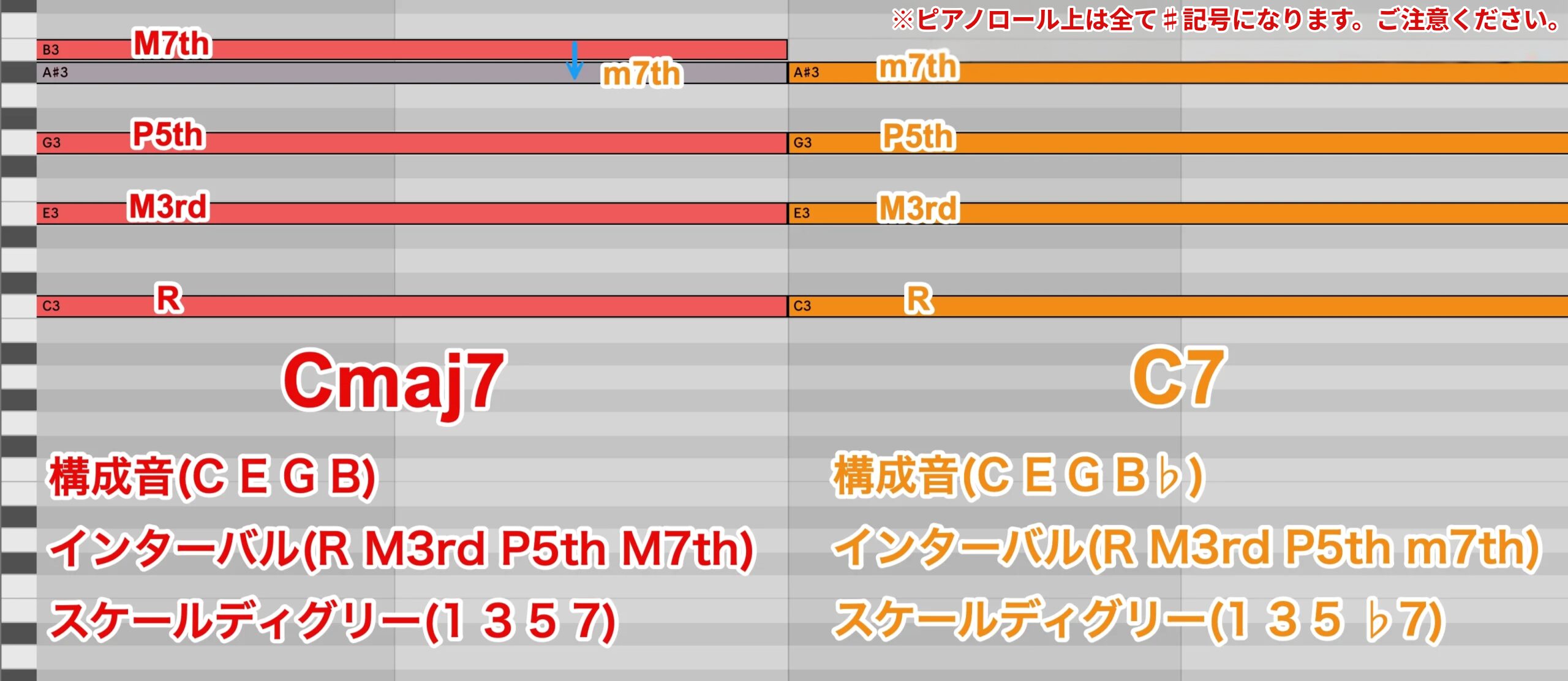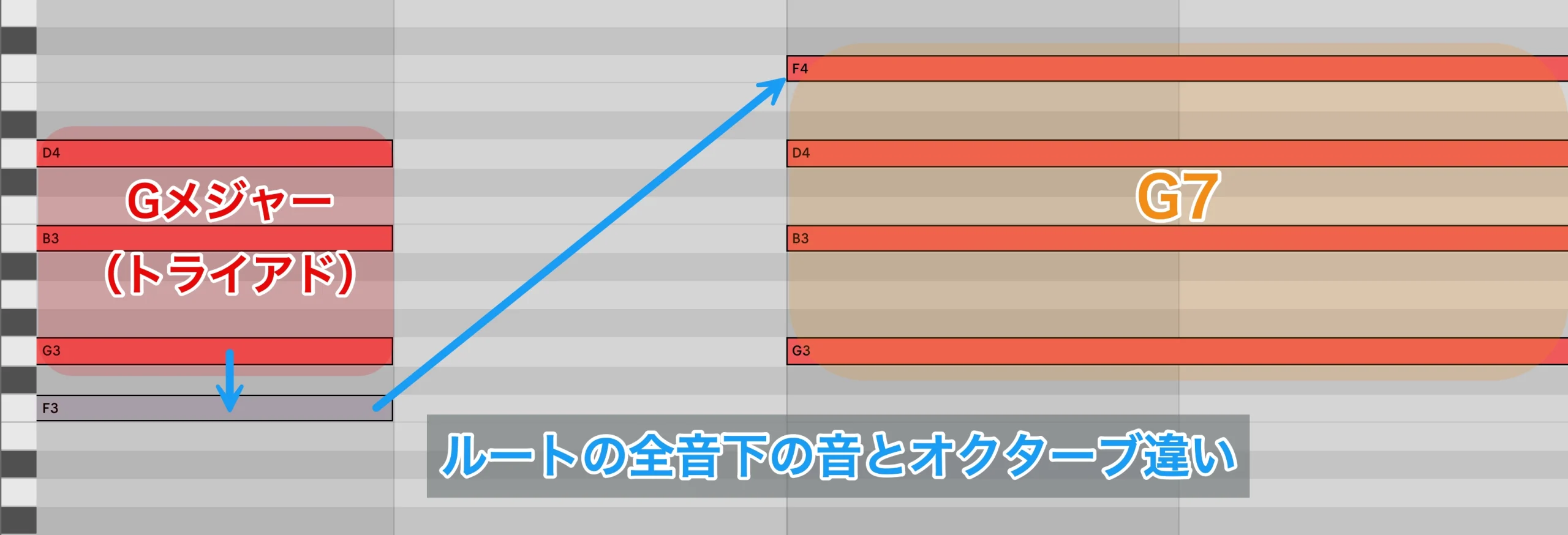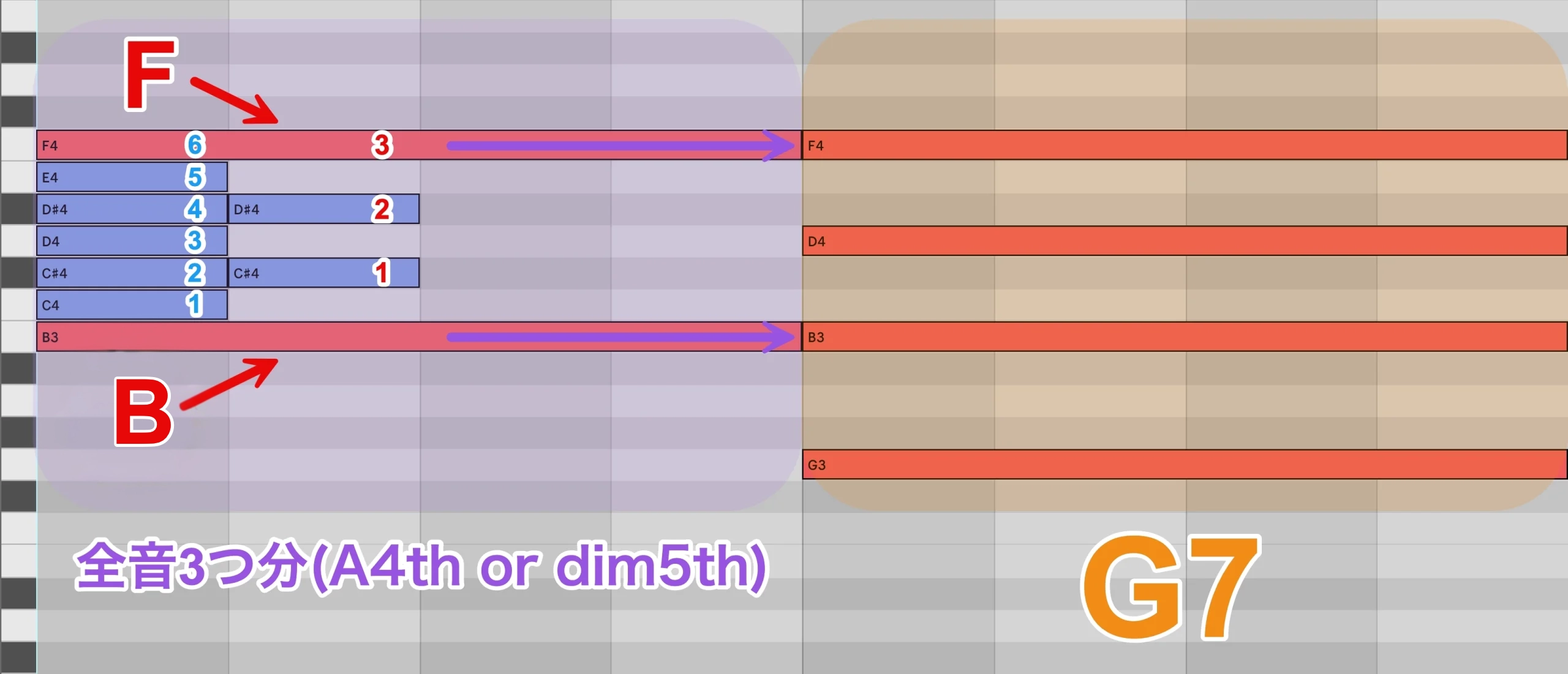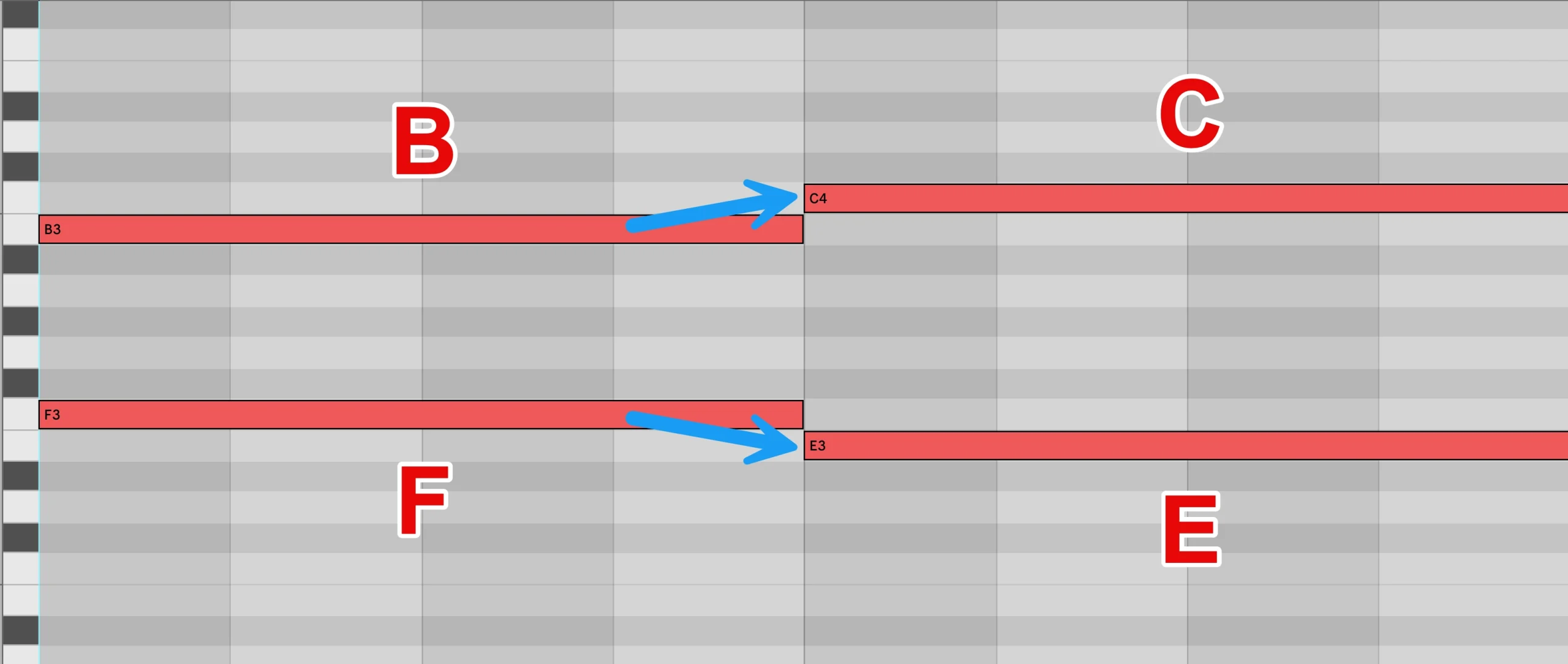四和音のコード ドミナント・セブンスコード/音楽理論講座
緊張感を含んだコード「ドミナント・セブンス」
今回は、“緊張感”のあるサウンドが特徴のドミナント・セブンスコードについて学んでいきます。
“緊張感”ということは…前項のトライトーンが関係してきそうですね。
ドミナント・セブンスコードも、これまでに学んだ「3和音のコード」を理解していれば、すぐに作ることができます。
まずは、サウンドを確認してみましょう。
コードの構成音を順に鳴らした後に、和音が鳴ります。
ドミナント・セブンスコードの表記
ドミナント・セブンスコードは下記のように表記されます。
基本的にこの一つで大丈夫です。
- Cドミナント・セブンスなら=C7
- Dドミナント・セブンスなら=D7
呼び名としては、「〜ドミナント・セブンスコード」では長いので、省略して「〜セブン」「〜セブンス」「〜セブンスコード」と呼ぶことが多いですね。
ドミナント・セブンスコードの基本形
C7コードの基本形を、譜面とピアノロールでそれぞれ確認してみましょう。
ここで何か気づきませんか?
そうです。メジャーセブンスコードと同じく、途中までCメジャーコードとなっています。
こちらも大切な部分は、既に学んでいるのです。
途中までメジャーコードという共通点がありますので、メジャーセブンスコードと比べてみましょう。
Cmaj7→C7の順に鳴ります。
メジャーセブンスコードの基本形のM7thを半音下げ、m7thにすることにより、ドミナント・セブンスコードの基本形に変化させることができますね。
つまり、ドミナント・セブンスコードは以下の通りです。
- インターバルで覚えるなら、R M3rd P5th m7th
- スケールディグリーで覚えるなら、1 3 5 ♭7
ドミナント・セブンスコードの簡単な作り方
距離が遠いようで近い7番目の音に手っ取り早くたどり着くために、以前お伝えした「逆転の発想」からG7を作成してみましょう。
Gメジャーコードができれば、m7thなのでルートの全音下の音を付け加えるだけで、ドミナント・セブンスコードの基本形はできるはずです。
ドミナント・セブンスコードとトライトーンの関係
G7コードの構成音はG B D Fと白鍵だけで非常にシンプルです。
サウンドを確認してみましょう。
非常にシンプルですが、どことなく不安定さや緊張感を感じますね。
ここで前項を思い出していただきたいのですが、実はこのドミナント・セブンスコードにはトライトーンが含まれているのです。
前項の最後に聴いていただいた1つのサンプルを覚えていますか。
あらためて聴いてみましょう。
トライトーンから「ある音」に移動して解決したような感覚がありますが、どの音に移動したのでしょうか。
ここで確認しておきましょう。
「B→C、F→E」と、それぞれ半音隣に移動しています。
ドミナント・セブンスコードの次に何かのコードを演奏すると、同じような効果が得られそうですね。
勘の良い方はすでにお気づきかもしれません。
次回はマイナーセブンス・フラットファイブというコードを学んだ後、今までのコードをどのように使用するかに移ります。
上記の動きについても、引き続き覚えておいて下さい。










